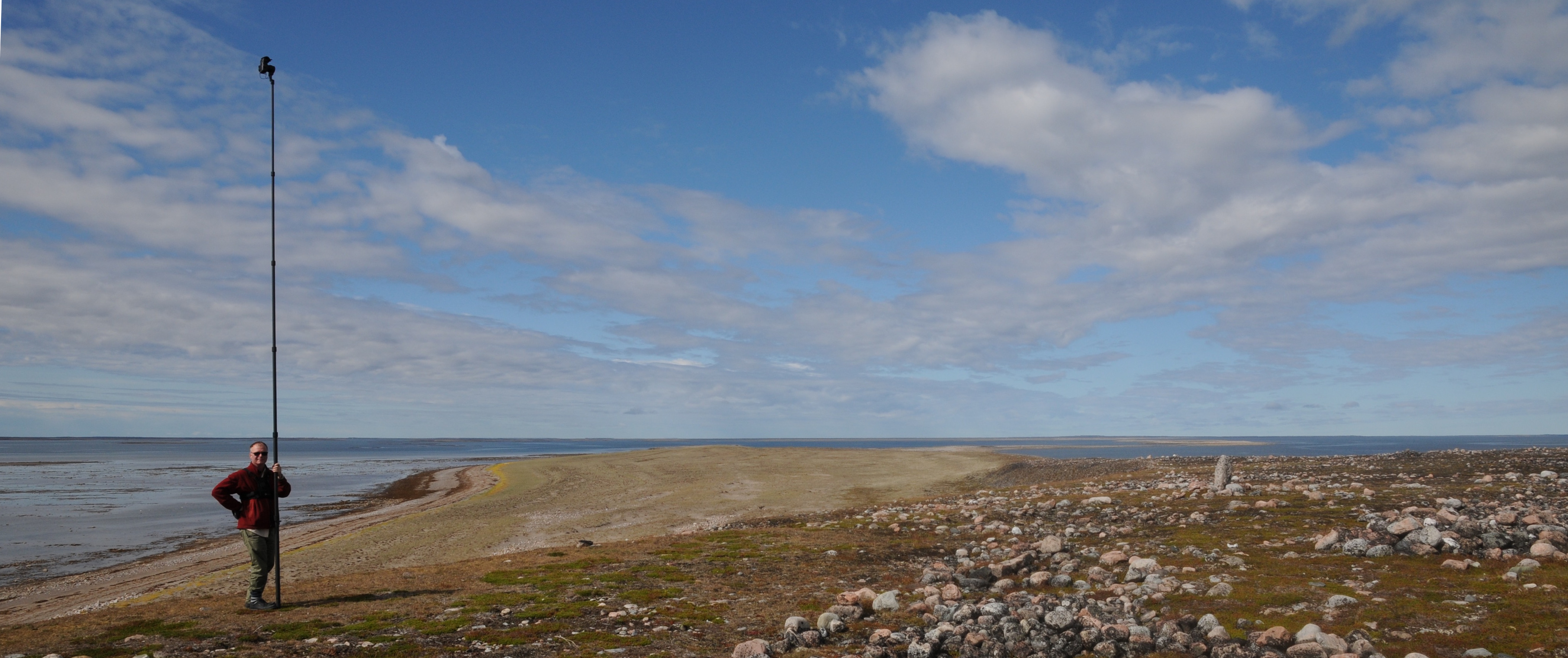Behind the Scenes
In phase two of the project “Using Photospheres to Contextualize Traditional Inuit Place Names” researchers travelled to Arvia’juaq National Historic Site. They used drones and pole-mounted digital SLR cameras to capture immersive panoramic images of the site’s many cultural and natural features that are of great significance to the Paatlirmiut Inuit. Elders and local experts from the community of Arviat were involved, and together with the researchers they followed the trail that runs the length of the island, capturing high resolution photospheres as well as videos of the Elders and local experts speaking about the cultural features on the island and the oral history to which these features are tied.
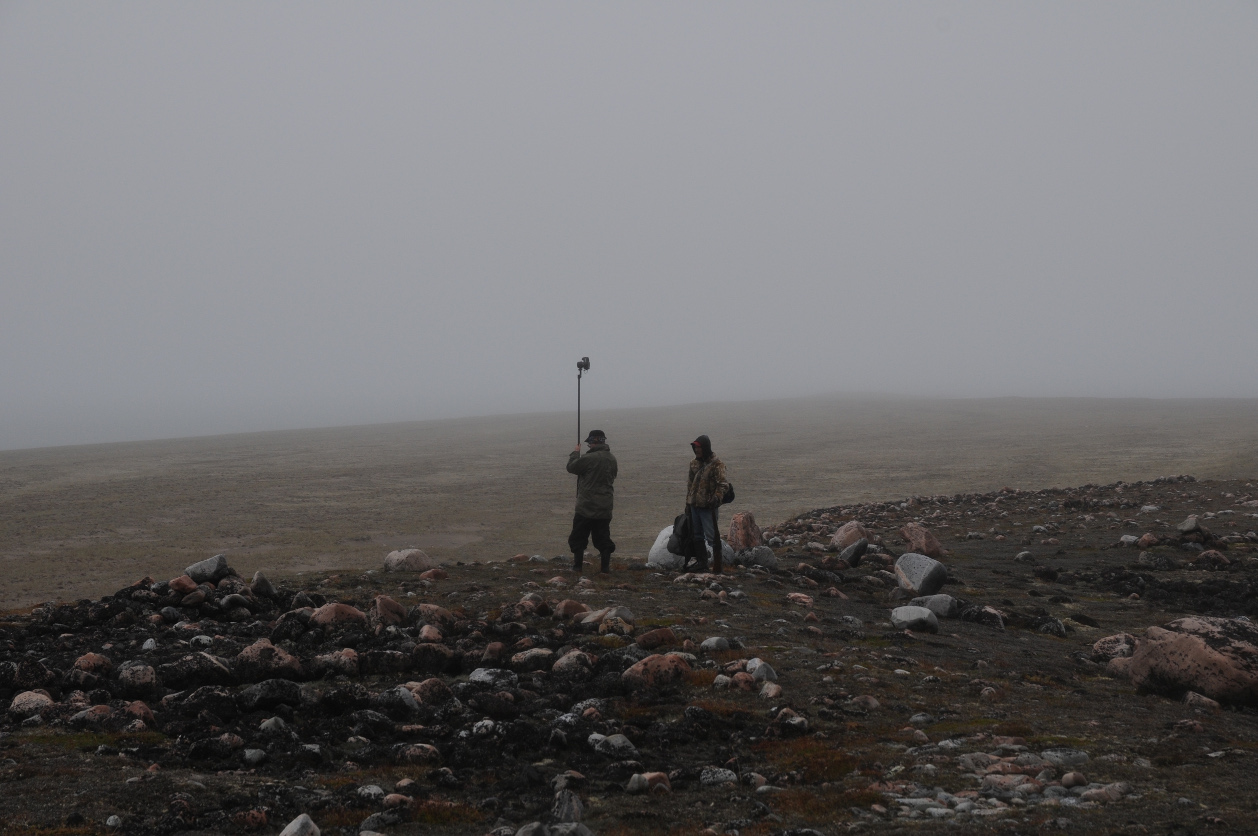
With the goal of creating an accessible and interactive method of outreach for the Arvia’juaq National Historic Site, these photographs and videos were turned into an online virtual tour of the Arvia’juaq National Historic Site.
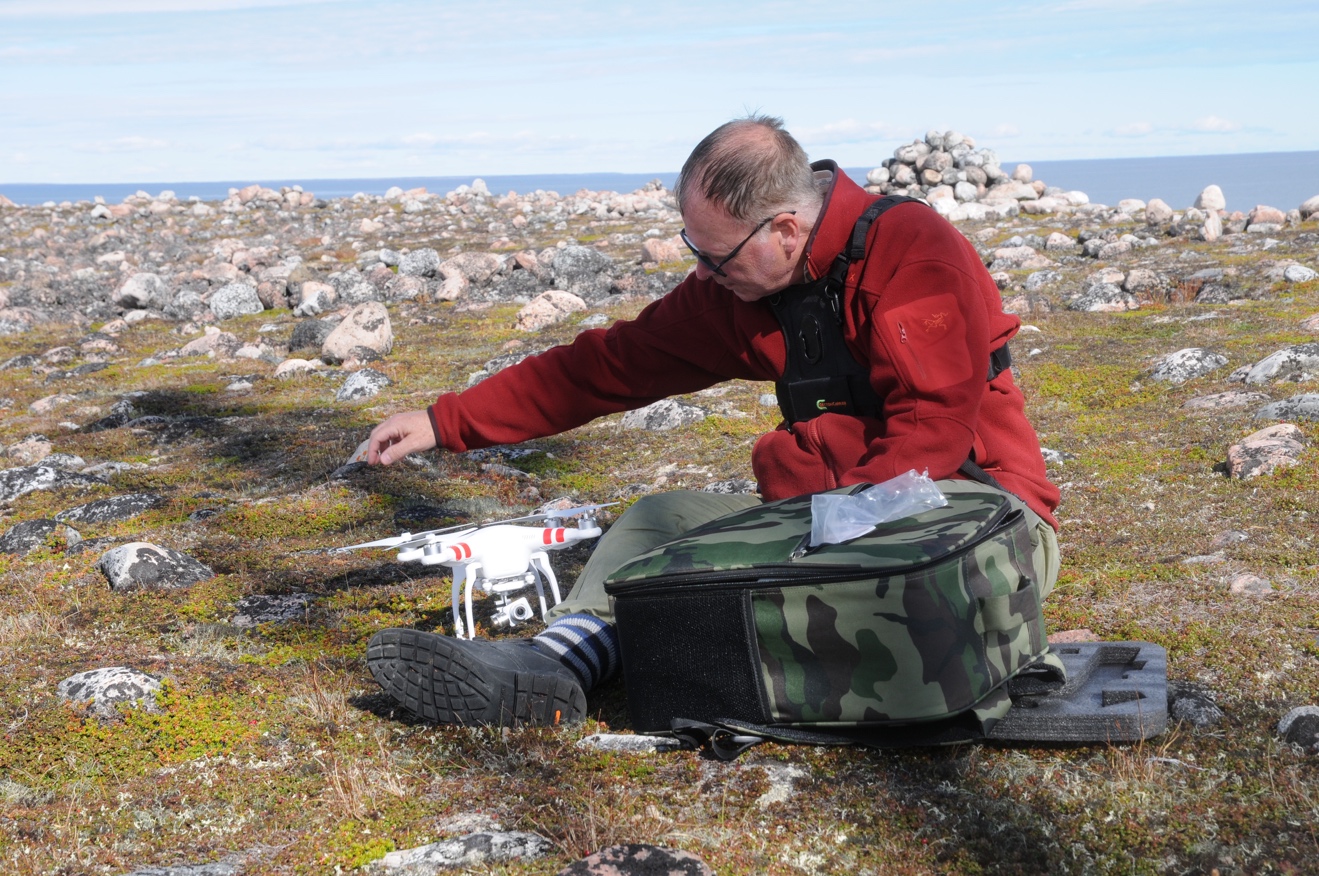
This tour includes information on archaeological features, as well as cultural features and oral history. The objective is to develop methods to digitally document Polar heritage in both its tangible form, such as artifacts at this archaeological site, and intangible form, as in indigenous forms of traditional knowledge, oral histories, songs, and stories.
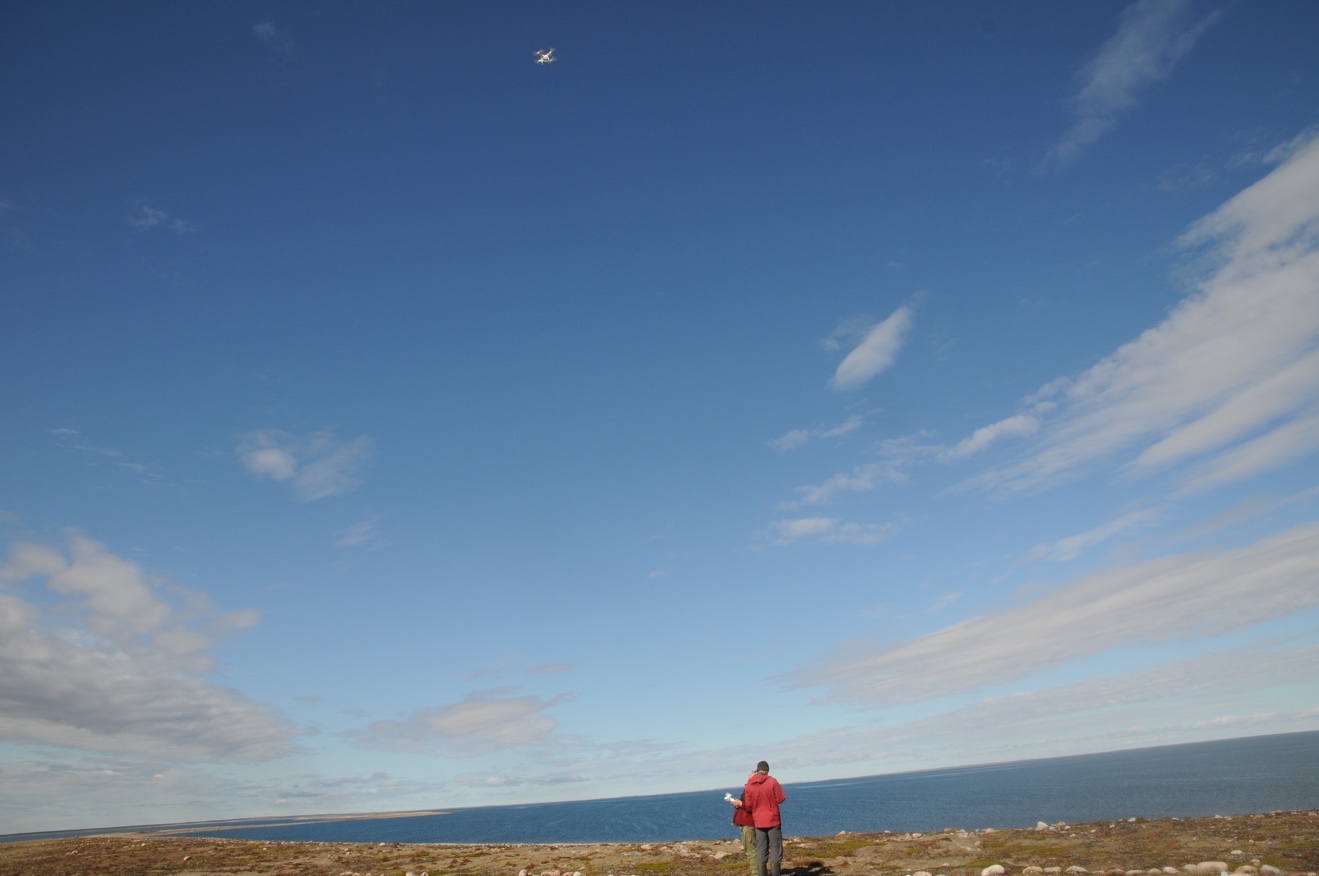
This project will serve as part of the well-conceived outreach needed for the Arvia’juaq National Historic Site, and will also act as a proof of concept for other archaeological sites or sites of national significance which may be too remote for most people to visit.
Community Consultation
In August of 2016 travel to Arviat was undertaken to conduct consultation with key stakeholders in the community. The Arvia’juaq virtual tour and website content needed to be checked by these community experts for accuracy. Furthermore, it was necessary to test the tour’s compatibility with the technological challenges of the Arctic, such as limited internet availability.
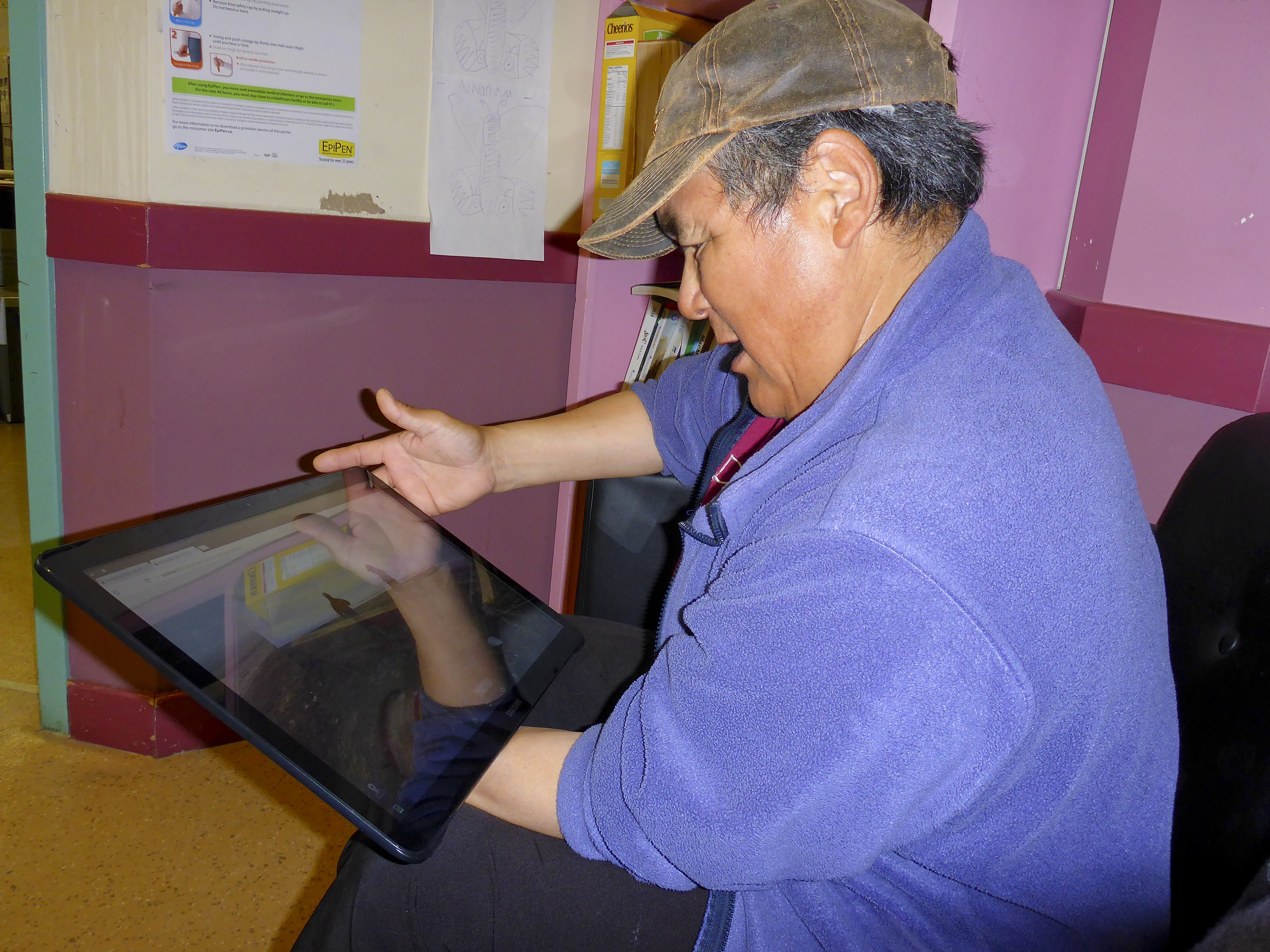
The project wished for the icons in the tour to have more of a local style than the generic clip-art style icons used initially. A visit to Qitiqliq Middle School was conducted and a presentation about the Arvia’juaq virtual tour was made to the Grade 8b class. After the presentation, the students were asked to draw new, more Arviat-appropriate icons for the tour. A large number of drawings were of high enough quality that it was later possible to replace all of the icons in the tour with ones drawn by youth in Arviat.
